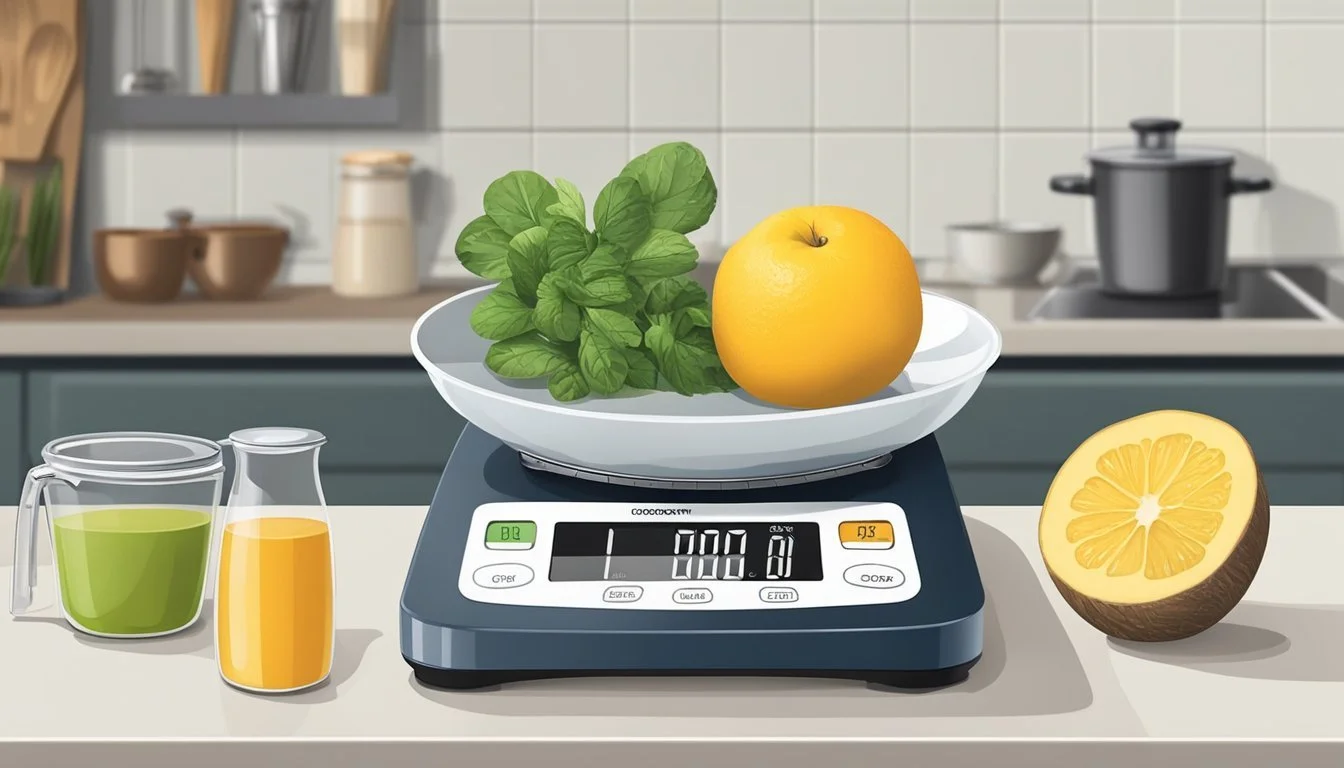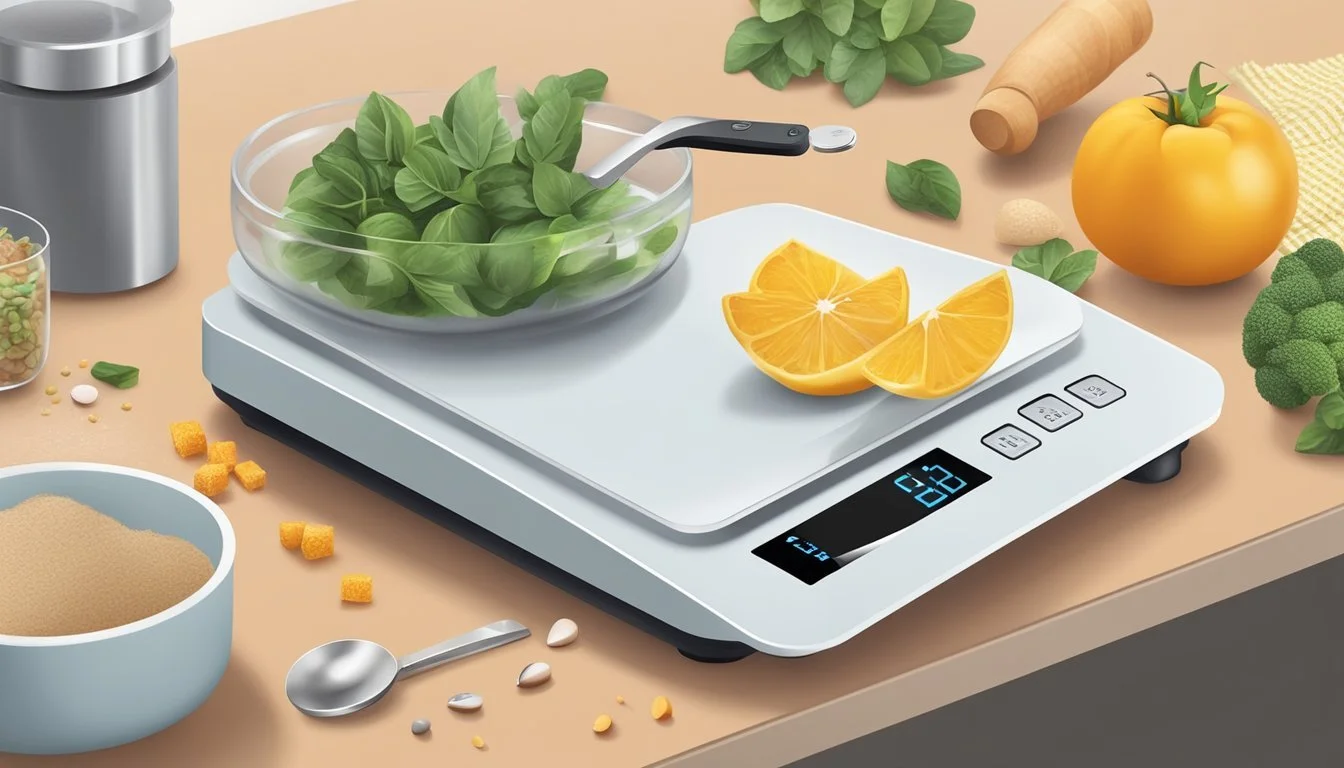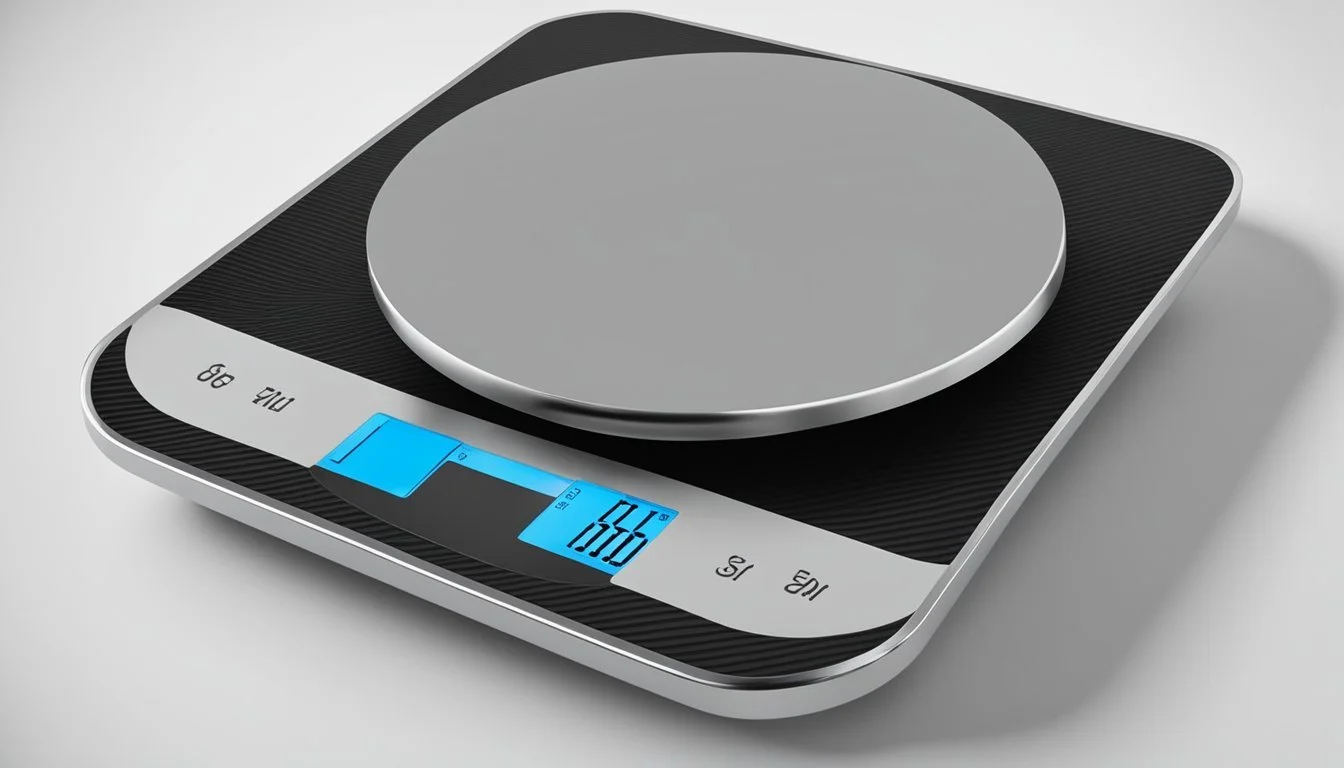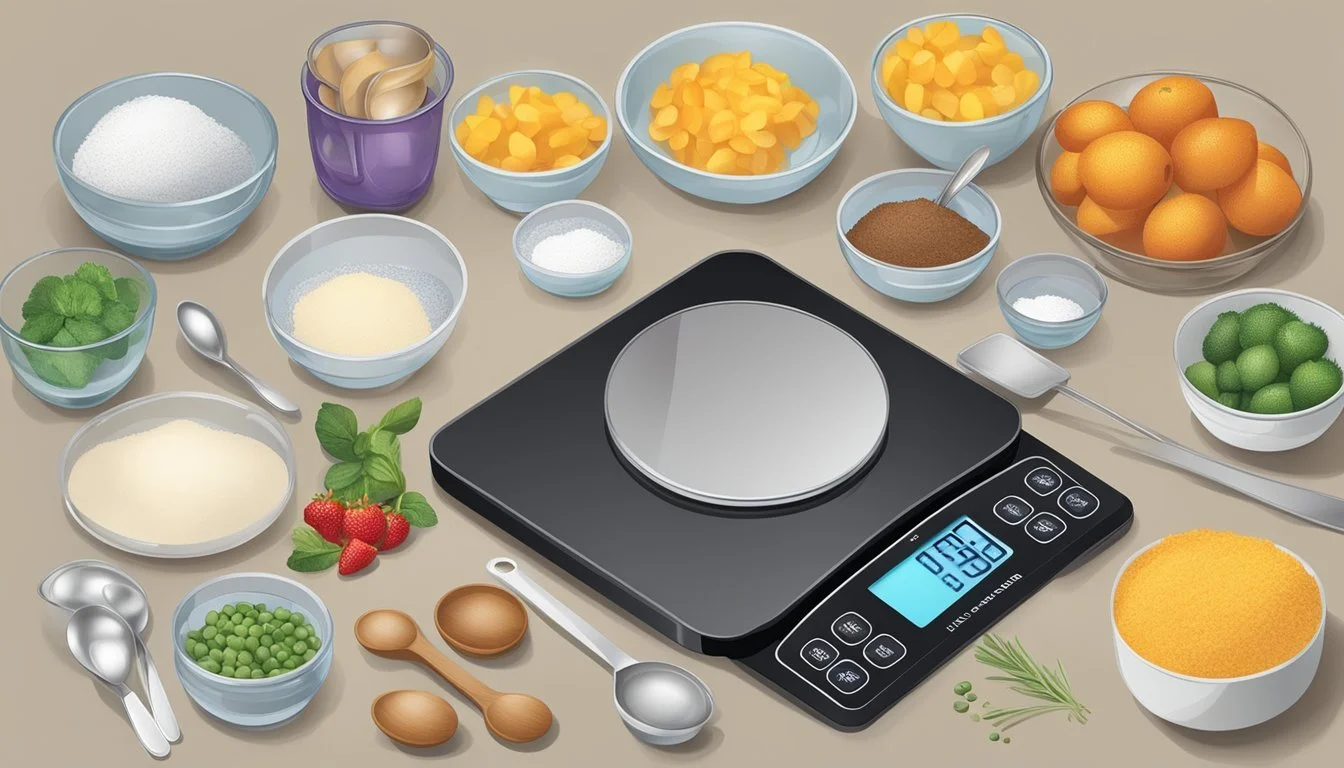Understanding the Basics of a Kitchen Scale
Your Guide to Accurate Measurements
A kitchen scale, a tool often regarded as essential by culinary enthusiasts and professionals alike, is designed to provide precise measurements of ingredients, a critical factor in the success of many recipes. Unlike measuring by volume using cups and spoons, a scale measures by weight, which is often more accurate. This accuracy plays a pivotal role in cooking and baking where the correct ratio of ingredients ensures the desired taste, texture, and appearance of dishes.
Most modern kitchen scales feature digital displays, making it easier for users to read measurements quickly. These scales are equipped with a tare function, which permits users to zero the scale with a container on it before adding ingredients, thus measuring only the contents. The capacity of kitchen scales can vary, with some able to handle only a few pounds, while others can manage larger weights suitable for extensive food preparation or bulk ingredients.
Maintaining the accuracy of a kitchen scale is also important. This is achieved by storing it in a cool, dry place and calibrating it regularly, which helps to prevent drift in measurements that can occur over time due to normal use. Understanding these basic functions and care practices can greatly enhance the efficiency and enjoyment of cooking at home.
Understanding Kitchen Scales
Kitchen scales are essential tools for precision in cooking and baking, offering accurate measurements of ingredients. They come in different types that accommodate a variety of measurement units for flexible usage.
Types of Kitchen Scales
There are mainly three types of kitchen scales: digital, mechanical, and analog. Digital kitchen scales have an LCD display and often include a tare function to subtract the weight of containers. They are known for their accuracy and ease of use. Mechanical kitchen scales are more traditional, with a physical spring that moves a needle to indicate weight. Their manual nature requires users to sometimes adjust them for accuracy. Lastly, analog kitchen scales have a simple design with a dial that points to the weight, but they are generally the least precise.
Measuring Units Explained
Kitchen scales should cater to the two common measurement systems: metric and imperial. In the metric system, weight is typically measured in grams (g), whereas the imperial system uses ounces (oz). Here is a simple conversion table for reference:
Grams (g) Ounces (oz) 1 g 0.035 oz 100 g 3.527 oz 500 g 17.637 oz 1000 g 35.274 oz
Depending on the recipe, a cook may need to use either grams or ounces, and many digital scales provide the option to switch between these units with the push of a button. The ability to easily toggle between units of measurement makes kitchen scales versatile for different recipes and preferences.
Key Features of Kitchen Scales
Kitchen scales are essential for precise measurement in cooking and baking. They offer features that ensure accuracy and convenience, allowing users to achieve consistent results.
Weight Capacity and Increments
Kitchen scales are designed with a maximum weight capacity that they can measure. This capacity can range from a few pounds to tens of kilograms, accommodating various ingredients and kitchen needs. They measure in specific increments, often as precise as one gram or 0.1 ounces, which helps in ensuring precise measurements for recipes.
Size and Portability
Most kitchen scales are crafted to be compact and lightweight, making them easy to store and move around. The size of a kitchen scale is an important consideration if kitchen space is limited. Portability also makes it convenient for users to take their scales to different work areas or for travel.
Digital Display and Precision
The digital display on the scales provides a clear readout of measurements, promoting precision. It typically features large numerals for easy visibility. The tare function allows users to subtract the weight of a container, measuring only the contents within. This function contributes to the scale's accuracy and precision, ensuring that measurements are not skewed by external factors.
Using Kitchen Scales for Baking
Kitchen scales are critical tools for baking, offering precision and consistency. They are especially useful for achieving the desired texture and taste by measuring ingredients accurately.
Consistency in Baking
Using a kitchen scale ensures that ingredients are measured by weight, which is more precise than measuring by volume. This precision is crucial when working with ingredients like flour, where the density can change depending on factors like humidity or how compacted it is in the measuring cup. A baker who measures 100 grams of flour today will measure out that same exact amount the next time, fostering consistency across all baking sessions.
Measuring Small Quantities
Many recipes call for small quantities of ingredients that are difficult to measure accurately with measuring cups or spoons. When dealing with spices, leavening agents, or salt, a scale can accurately measure small amounts down to the gram, ensuring the flavor profile of the baked goods remains as intended.
The Importance of Tare Function
The tare function on kitchen scales allows bakers to measure ingredients without having to consider the weight of the container. One presses the tare button to reset the display to zero with the container on it. Then they can add the ingredient, such as flour, and only its weight will be displayed. This feature is invaluable for measuring multiple ingredients into the same bowl without having to empty and clean it between each ingredient.
Cooking and Recipe Conversion
When cooking or baking, precise measurements of ingredients are crucial for the intended result. This section covers critical aspects of converting measurements to ensure accuracy and consistency in recipes.
Understanding Weight-to-Volume Conversion
Weight-to-volume conversion is essential when a recipe calls for an ingredient by weight, but the cook only has measuring cups or spoons. They must understand that a cup of different substances can vary significantly in weight. For example, a cup of flour typically weighs around 120 grams, while a cup of sugar weighs about 200 grams. Converting weight to volume requires knowing the specific density of the ingredient. Cooks often refer to charts or online calculators for these conversions.
Table 1: Common Weight-to-Volume Conversions
Ingredient Weight (grams) Volume All-purpose flour 120 1 cup Granulated sugar 200 1 cup Butter 227 1 cup (2 sticks) Honey 340 1 cup
Adapting Recipes with Different Measurements
Adapting recipes is necessary when measurements provided are not in a format the cook can measure with the tools at hand or when the recipe size needs to be scaled up or down. The cook must understand the relationship between different volume measurements used in cooking.
Volume Measurement Conversions
Basic Liquid Volumes
1 cup = 8 fluid ounces
1 pint (2 cups) = 16 fluid ounces
1 quart (4 cups) = 32 fluid ounces
1 gallon (4 quarts) = 128 fluid ounces
Measuring Spoons to Cups
1 tablespoon (Tbsp) = 3 teaspoons (tsp)
16 tablespoons = 1 cup
1 teaspoon = about 5 milliliters (mL)
Applying these conversions allows cooks to easily switch between cups, tablespoons, and teaspoons, or to resize recipes according to their needs. They’ll adapt from larger to smaller quantities by dividing and from smaller to larger by multiplying, keeping ratios of ingredients consistent for the integrity of the recipe.
Maintenance and Calibration
To ensure accuracy and prolong the life of a kitchen scale, regular maintenance and periodic calibration are essential. Proper cleaning prevents residue buildup that can affect measurements, while calibration guarantees precision.
Cleaning Your Kitchen Scale
One should clean their kitchen scale routinely to maintain its accuracy. Using a damp cloth and a gentle cleanser allows for an easy cleanup without the risk of damage that harsh chemicals may cause. It is also important to dry the scale thoroughly to prevent any potential water damage to its electronic components.
Calibrating Your Scale
Calibration is a critical step to ensure a kitchen scale's accuracy. The process should commence with the scale at room temperature, on a flat and stable surface. One should follow these steps:
Power On: Turn the scale on.
Enter Calibration Mode: Depending on the model, this is usually done by holding a designated calibration button for a few seconds until a 'CAL' prompt appears.
Place Calibration Weight: When the scale signals, place a calibration weight or weights at the center of the platform.
Note: Calibration weights should be certified and corresponding to the scale's maximum capacity.
By following the above procedures, one will maintain the precision and extend the longevity of their kitchen scale.
Selecting the Right Kitchen Scale
Choosing the right kitchen scale involves balancing cost with desired features, as well as considering the reliability of different brands and models. Home cooks should focus on scales that provide ease of use and speed, without straining their budget.
Considering Price and Budget
When determining the price range for a kitchen scale, consumers should be realistic about their budget. Kitchen scales come in a variety of price points, starting from basic analog scales to high-end digital models.
Analog Scales: Generally more affordable but less precise.
Digital Scales: Offer greater precision, with prices varying based on features.
Evaluating Features for Home Cooks
Home cooks should prioritize kitchen scales that simplify the cooking process. Ease of use is critical, and features should enhance kitchen efficiency.
Precision: Look for scales offering measurement increments as fine one-tenth (0.1) of a gram.
Speed: Consider models with quick response times for fast-paced cooking.
Design: Compact and easy-to-clean scales save space and maintenance time.
Comparing Brands and Models
The market offers a range of brands and models, each with its own set of features. Home cooks should compare them to find a scale that meets their specific needs.
Reputation: Brands with positive reviews are often more reliable.
Warranty: A good warranty can be indicative of a brand's confidence in its product.
Model Comparisons: Weigh the benefits of newer models against established ones, considering technological advancements.
Advanced Kitchen Scale Technology
In the realm of kitchen tools, scales have seen significant technological advancements. Modern kitchen scales offer features that enhance accuracy, convenience, and utility, evolving beyond their traditional counterparts.
Smart Scales and Connectivity Features
Smart scales bring a new level of sophistication to the kitchen, offering connectivity that allows them to interface with mobile devices via Bluetooth. This function provides users with the ability to track and log their weighing directly on their smartphones or tablets. Features typically include:
Backlit displays: For easy reading in various lighting conditions.
Syncing capabilities: Often with proprietary or third-party apps for dietary tracking or recipe assistance.
Interactive ratios: Some smart scales can calculate ratios, which is particularly useful for bakers who work with baker’s percentages.
Benefits of smart scales include:
Improved Accuracy: They often provide readings in precise increments, ensuring accurate measurements.
Convenience: The ability to transfer measurement data to other devices simplifies the cooking and baking process.
Choosing Scales for Specific Ingredients
Different ingredients require distinct modes of measurement, and advanced scales cater to this need. For dry ingredients, such as flour or sugar, a scale ensures precise measurements that cups cannot guarantee due to variable density and packing differences. Liquid ingredients, on the other hand, benefit from a scale's ability to differentiate between volume and weight, a feature not possible with a standard liquid measuring cup. When selecting a scale for specific ingredients, consider:
Weight Capacity: Ensures the scale can handle the necessary amounts, from lightweight spices to heavier food items.
Incremental Measurements: Small increments are crucial for weighing ingredients that require high precision.
Type of Scales:
Digital with flat surface: These scales tend to be easy to clean and can accommodate different size containers.
Pocket scales: Suitable for those needing to measure in smaller increments, like 0.1 grams.
Users should ensure they select a scale that complements the range of ingredients they typically use and aligns with their measurement preferences, whether for liquid or dry goods.
Practical Tips and Tricks
When using a kitchen scale, users will find that precision in measurement leads to consistent results in cooking and baking. The ease of use begins with understanding the tare function. It allows the scale to disregard the weight of the container, providing an accurate measurement of the ingredients alone. By pressing the tare button after each addition, one can measure multiple components in a single bowl, streamlining the process and reducing cleanup.
Accurate measurements are made simple with a kitchen scale, which can switch between units of measurement. Users can easily measure ingredients in grams, ounces, or pounds, adapting to any recipe requirement.
For maintenance, it's advisable to store the scale in a dry, cool place to prevent any damage to its sensitive components. Regular calibration ensures sustained accuracy over time. Below are some structured tips for efficient use:
Start by placing an empty bowl on the scale and use tare to zero out the weight.
Accurately pour the first ingredient until the desired weight is achieved.
Hit the tare button again before adding subsequent ingredients.
Between uses, always clean the scale gently to avoid ingredient build-up.
For liquid ingredients, consider using lightweight, clear measuring cups for easy reading.
By following these guidelines, anyone can achieve an efficient and user-friendly experience with their kitchen scale. It not only saves time during preparation and cooking but also makes the cleanup process effortless. A kitchen scale is a reliable tool that, when used effectively, enhances the overall quality and consistency of food preparation.
Supplementary Tools and Accessories
Kitchen scales are enhanced by a range of supplementary tools and accessories that facilitate ease of use and precision. These include specifically designed bowls and attachments, as well as items for calibration and tare functionality. Utilizing these tools improves accuracy and convenience in measurement.
Bowls and Mixing Attachments
Mixing Bowls: It's advantageous to use a mixing bowl that comfortably fits on the kitchen scale's platform. Many scales now offer optional bowls designed to snugly fit and balance on the scale, ensuring stability during weighing.
Measuring Cups: Some scales may come with measuring cup attachments that can be used both for solids and liquids, making them versatile supplementary tools.
Calibration and Tare Accessories
Calibration Weights: To maintain accuracy, kitchen scales should be periodically calibrated using standard calibration weights. These weights typically come in sets, allowing for fine adjustments to the scale.
Tare Function: A tare accessory is often an integrated feature that allows users to subtract the weight of a container and weigh the contents only. It ensures that the weight displayed is that of the item, not the item plus the container.







